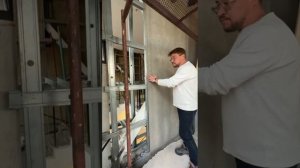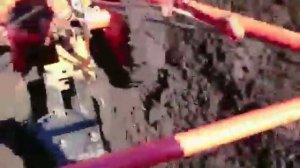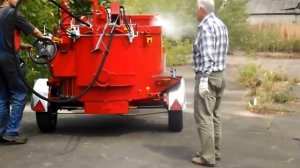
 10:14
10:14
2023-12-04 11:42

 2:01
2:01

 2:01
2:01
2024-01-02 13:43

 0:30
0:30

 0:30
0:30
2025-05-12 01:39

 4:15
4:15

 4:15
4:15
2024-10-24 04:34

 1:42
1:42

 1:42
1:42
2023-11-03 07:49

 12:34
12:34

 12:34
12:34
2023-10-26 19:10

 25:20
25:20

 25:20
25:20
2024-10-07 12:30

 2:34
2:34

 2:34
2:34
2025-04-01 20:15

 1:19
1:19

 1:19
1:19
2024-06-17 22:27

 13:42
13:42

 13:42
13:42
2025-09-23 00:51

 3:41
3:41

 3:41
3:41
2025-09-23 10:01

 3:13
3:13

 3:13
3:13
2023-09-24 22:55

 6:28
6:28

 6:28
6:28
2023-08-27 19:50

 1:11
1:11

 1:11
1:11
2023-08-23 10:50

 3:14
3:14

 3:14
3:14
2022-12-14 19:57

 13:51
13:51

 13:51
13:51
2023-09-23 18:20

 2:14
2:14

 2:14
2:14
2023-08-28 12:47

 2:41
2:41
![TASSO - Таю (Премьера клипа 2025)]() 3:23
3:23
![KINO - DIRTY BOY (Feat. JAMIE, UWA)]() 3:22
3:22
![Эльдар Долаев - Ранила (Премьера клипа 2025)]() 3:02
3:02
![Азамат Ражабов - Отам (Премьера клипа 2025)]() 4:38
4:38
![Антон и Альфия - Сентиментальный мотив (Премьера клипа 2025)]() 3:35
3:35
![Анвар Нишонов - Тулкилар (Премьера клипа 2025)]() 3:38
3:38
![MIA BOYKA - А он такой (Премьера клипа 2025)]() 2:24
2:24
![Вусал Мирзаев - Моя потеря (Премьера клипа 2025)]() 2:42
2:42
![Толиб Тухтасинов - Хоп-Хоп (Премьера клипа 2025)]() 3:09
3:09
![ARTIX, SHAXO - Дождь (Премьера клипа 2025)]() 5:23
5:23
![Сарвар Азим - Бахтим (Премьера клипа 2025)]() 4:10
4:10
![SEVENTEEN - For You SPECIAL VIDEO Live Clip]() 3:16
3:16
![Премьера! Ваня Дмитриенко и Аня Пересильд - Силуэт (OST «Алиса в Стране Чудес»)]() 2:47
2:47
![Xeko - Увы, чужая (Премьера клипа 2025)]() 2:10
2:10
![Gazan, Бабек Мамедрзаев - Танцуй моя королева (Премьера клипа 2025)]() 2:29
2:29
![UMARO, Сангин - Брат мой (Премьера клипа 2025)]() 3:16
3:16
![ХАБИБ - Шаганэ (Премьера клипа 2025)]() 2:49
2:49
![Динара Швец - Новая история (Премьера клипа 2025)]() 3:45
3:45
![Олег Семенов - Бархатный сезон (Премьера клипа 2025)]() 3:51
3:51
![Премьера клипа! ХАБИБ - Шаганэ]() 2:49
2:49
![Комната (2003)]() 1:39:52
1:39:52
![Отец]() 1:32:56
1:32:56
![Очень странные дела 3 СЕЗОН]() 7:27:28
7:27:28
![Сирены (2025) Netflix]() 4:26:06
4:26:06
![Ведьмак 3 СЕЗОН]() 7:35:20
7:35:20
![Волынь (2016)]() 2:28:56
2:28:56
![Порочный круг | Vicious (2025)]() 1:42:30
1:42:30
![Последний клиент]() 1:33:23
1:33:23
![Doom (2005) (Расширенная версия)]() 1:52:44
1:52:44
![Макс Пэйн (2008) (Расширенная версия)]() 1:42:59
1:42:59
![Терминатор | The Terminator (1984) (Гоблин)]() 1:47:17
1:47:17
![Алиса в Стране чудес: Все части 1, 2 (фильмы)]() 4:14:09
4:14:09
![Очень странные дела 2 СЕЗОН]() 7:44:08
7:44:08
![102 далматинца (фильм, 2000) | 101 далматинец 2 часть]() 2:08:47
2:08:47
![Заклятие 4: Последний обряд | The Conjuring: Last Rites (2025)]() 2:15:54
2:15:54
![Первый день моей жизни]() 1:56:45
1:56:45
![Рыжая Соня (2025)]() 1:50:40
1:50:40
![Тот самый | Him (2025)]() 1:36:20
1:36:20
![Посредники]() 2:04:01
2:04:01
![не13]() 2:06:27
2:06:27
![Союз зверей (2010) / Animals United]()
 1:33:07
1:33:07
![Земля до начала времён 12: Великий День птиц (2006) / The Land Before Time XII]()
 1:20:30
1:20:30
![Земля до начала времён 6: Тайна Скалы Динозавров (1998) / The Land Before Time VI]()
 1:12:60
1:12:60
![Шерлок Гномс (2018) / Sherlock Gnomes]()
 1:26:19
1:26:19
![Науэль и волшебная книга (2020) / Nauel and the Magic Book]()
 1:37:06
1:37:06
![Альфа и Омега 2: Приключения праздничного воя (2013) / Alpha and Omega 2: A Howl-iday Adventure]()
 45:08
45:08
![Девочки из Эквестрии. Пропуск за кулисы для Сансет (2018) / Equestria Girls. Sunset's Backstage Pass]()
 44:08
44:08
![Упс… Ной уплыл! (2015) / Ooops! Noah Is Gone...]()
 1:26:28
1:26:28
![Смурфики (2011) / The Smurfs]()
 1:42:44
1:42:44
![Альфа и Омега 4: Легенда о Зубастой Пещере (2014) / Alpha and Omega 4]()
 45:14
45:14
![Земля до начала времён 2: Приключения в Великой Долине (1994) / The Land Before Time II]()
 1:13:31
1:13:31
![Лоракс (2012) / The Lorax]()
 1:26:13
1:26:13
![Альфа и Омега 3: Большие Волчьи Игры (2013) / Alpha and Omega 3: The Great Wolf Games]()
 45:01
45:01
![Земля до начала времён 13: Сила дружбы (2007) / The Land Before Time XIII]()
 1:15:39
1:15:39
![Гномео и Джульетта (2011) / Gnomeo & Juliet]()
 1:23:51
1:23:51
![Альфа и Омега 6: Прогулка с динозавром (2015) / Alpha and Omega: Dino Digs]()
 47:29
47:29
![Земля до начала времён 4: Путешествие в Землю Туманов (1996) / The Land Before Time IV]()
 1:13:52
1:13:52
![Плохие парни: Жутковатое ограбление (2024) / The Bad Guys: Haunted Heist]()
 22:03
22:03
![Земля до начала времён 10: Великая миграция (2003) / The Land Before Time X]()
 1:24:21
1:24:21
![Барби: Скиппер и большое приключение с детьми (2023) / Skipper and the Big Babysitting Adventure]()
 1:02:58
1:02:58

 2:41
2:41Скачать видео
| 256x144 | ||
| 640x360 |
 3:23
3:23
2025-10-16 10:00
2025-10-13 16:08
 3:02
3:02
2025-10-10 12:56
 4:38
4:38
2025-10-11 12:52
 3:35
3:35
2025-10-09 09:15
 3:38
3:38
2025-10-11 12:45
 2:24
2:24
2025-10-14 12:10
 2:42
2:42
2025-10-11 11:27
 3:09
3:09
2025-10-11 21:54
 5:23
5:23
2025-10-14 11:01
 4:10
4:10
2025-10-11 12:49
2025-10-09 18:00
 2:47
2:47
2025-10-10 09:59
 2:10
2:10
2025-10-10 12:50
 2:29
2:29
2025-10-11 12:10
 3:16
3:16
2025-10-10 13:04
 2:49
2:49
2025-10-10 12:36
 3:45
3:45
2025-10-15 10:45
 3:51
3:51
2025-10-16 10:57
 2:49
2:49
2025-10-10 09:59
0/0
 1:39:52
1:39:52
2025-10-08 18:11
 1:32:56
1:32:56
2025-10-13 11:37
 7:27:28
7:27:28
2025-10-16 22:05
 4:26:06
4:26:06
2025-10-12 20:27
 7:35:20
7:35:20
2025-10-16 18:54
 2:28:56
2:28:56
2025-10-08 21:04
 1:42:30
1:42:30
2025-10-14 20:27
 1:33:23
1:33:23
2025-10-13 11:36
 1:52:44
1:52:44
2025-10-09 20:16
 1:42:59
1:42:59
2025-10-15 16:40
 1:47:17
1:47:17
2025-10-07 09:28
 4:14:09
4:14:09
2025-10-06 16:06
 7:44:08
7:44:08
2025-10-16 21:44
 2:08:47
2:08:47
2025-10-14 17:39
 2:15:54
2:15:54
2025-10-13 19:02
 1:56:45
1:56:45
2025-10-13 11:38
 1:50:40
1:50:40
2025-10-15 14:11
 1:36:20
1:36:20
2025-10-09 20:02
 2:04:01
2:04:01
2025-10-13 11:37
2025-10-15 06:51
0/0

 1:33:07
1:33:07
2025-10-15 18:01

 1:20:30
1:20:30
2025-10-04 18:00

 1:12:60
1:12:60
2025-09-22 18:01

 1:26:19
1:26:19
2025-09-25 18:00

 1:37:06
1:37:06
2025-10-05 18:00

 45:08
45:08
2025-10-08 18:00

 44:08
44:08
Девочки из Эквестрии. Пропуск за кулисы для Сансет (2018) / Equestria Girls. Sunset's Backstage Pass
2025-10-03 18:00

 1:26:28
1:26:28
2025-09-06 18:00

 1:42:44
1:42:44
2025-09-27 18:00

 45:14
45:14
2025-10-12 18:00

 1:13:31
1:13:31
2025-09-13 18:00

 1:26:13
1:26:13
2025-09-14 18:00

 45:01
45:01
2025-10-10 18:00

 1:15:39
1:15:39
2025-10-06 18:00

 1:23:51
1:23:51
2025-09-10 18:00

 47:29
47:29
2025-10-16 18:02

 1:13:52
1:13:52
2025-09-17 18:00

 22:03
22:03
2025-09-21 18:00

 1:24:21
1:24:21
2025-09-30 18:00

 1:02:58
1:02:58
2025-09-07 18:00
0/0

